Not all foraging has to be sustenance seeking. Sometimes, it’s just nice to sample the “trailside nibbles” mentioned in foraging literature, and none are more pleasant to pick than edible flowers.
They’re a nice bit of flavor that can freshen your mouth after a long hike, and offer some guileless, fun foraging. Their contribution to the forager is more for the spirit than the stomach. They won’t fill your belly like a meal, but they can make beautiful garnishes, wonderful teas, interesting appetizer toppings, bright salad inclusions, and of course, plain enjoyment in the wild.
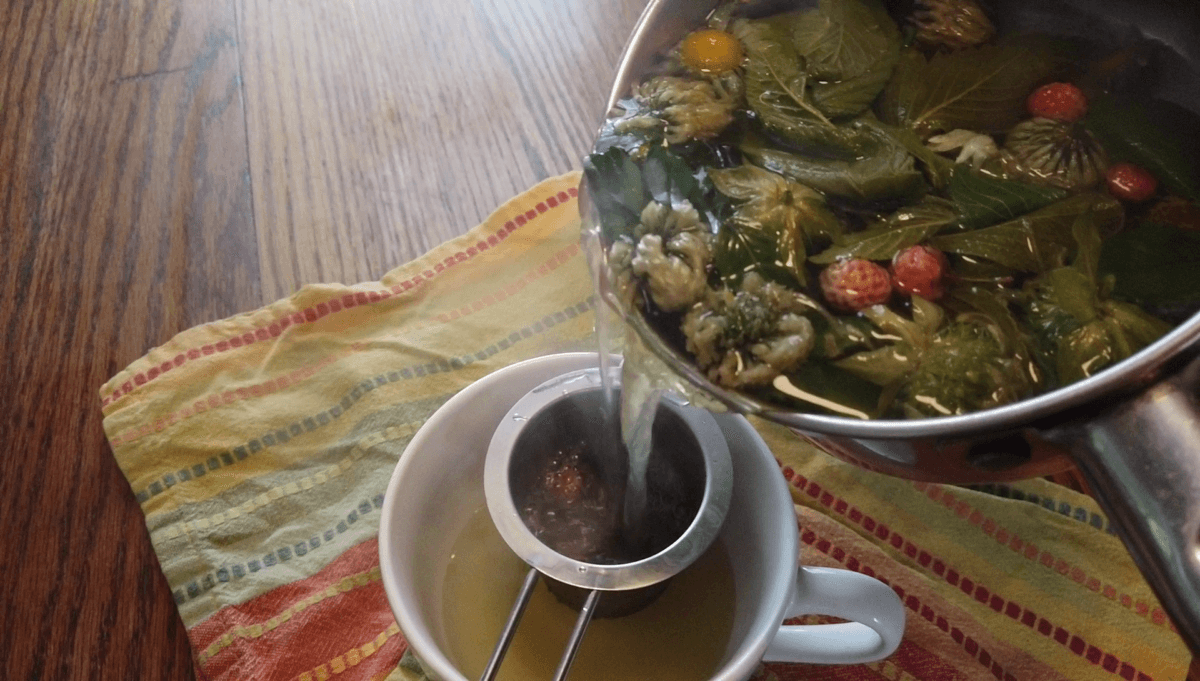
These edible flowers can also be an enjoyable way to introduce young children to the delights of foraging. Of course, no child should be directed or encouraged to indiscriminately eat flowers — some, like lily of the valley, are toxic. But when supervised by a knowledgeable adult, foraging for edible flowers can open their eyes to an exciting botanical universe.
So here are some blossoms that are safe and delicious to eat on the trail or in the kitchen.
Watch the Video
Obligatory Foraging Admonition
We’ve covered the basics of foraging safely and responsibly in our earlier article and video on the subject. But I would be remiss if I don’t repeat the important instructions I stated there. Only eat a wild plant if you are 100% sure of its identity. That’s why I list the scientific name of every species for you to reference. If ever you have that wavering uncertainty, take it as a red flag that you need to build up more knowledge before you put it in your mouth.
This article, for instance, doesn’t give you enough information to identify these plants if they are unfamiliar to you. It’s merely meant as a stepping stone in an interesting direction. Do the research, find someone knowledgeable to teach you, and when it comes to wild food, don’t guess.
Also, don’t forage from places that are at risk of contamination: roadsides, sidewalks, heavy-use public areas, or beneath powerlines. Pesticides and herbicides aren’t things you want to carelessly consume. They are killer chemicals, after all.
Different Types of Edible Flowers
Wood Sorrel (Oxalis spp.)
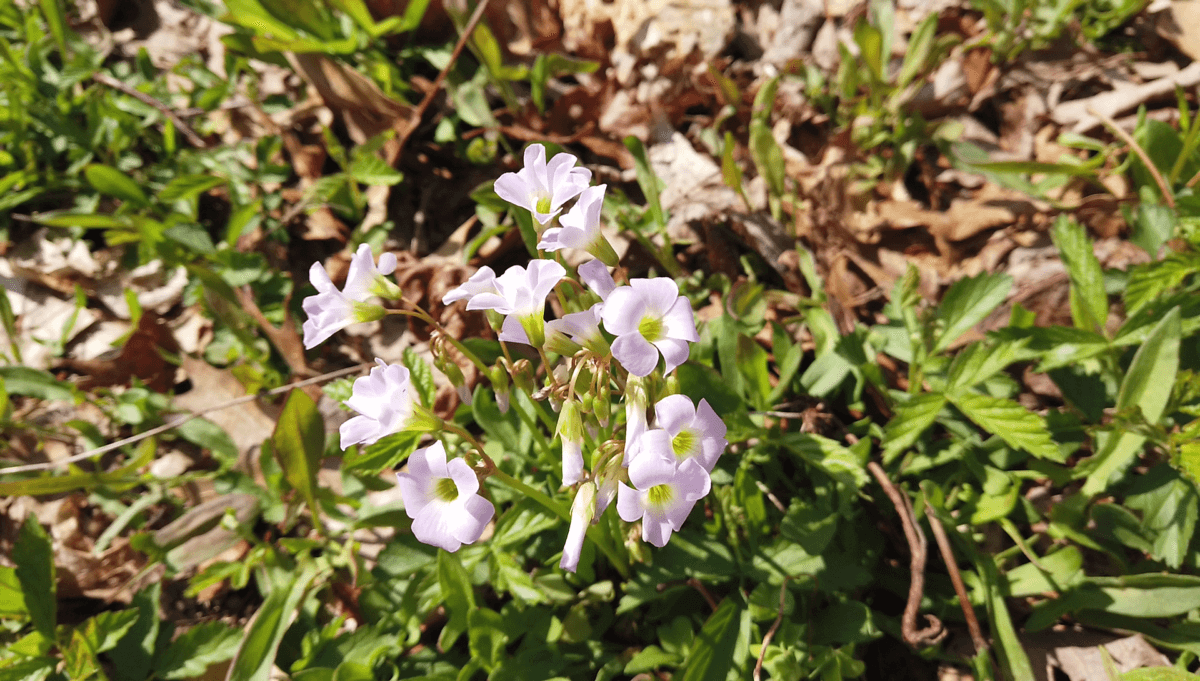
Often misidentified as clover, the wood sorrel plants are a common denizen of fields and forest edges. Their leaves consist of three, heart-shaped leaflets that connect to a thin, delicate stem. In my area, violet wood sorrel (Oxalis violacea) and yellow wood sorrel (Oxalis stricta) are the most common, (violet wood sorrel is the species that you see pictured). Blossoms have five petals, and after blooming, turn into bitty banana-shaped seed pods.
Like the sour tasting leaves and seed pods, the blossoms of wood sorrels are a bright burst of flavor. You’ll find yourself surprised and delighted by the intensity of the tart, lemony essence. Yellow wood sorrel will bloom through much of the summer, and is the sorrel species most likely to inhabit suburbia. Violet wood sorrel blooms profusely in the spring, then sometimes has a bizarre encore blooming in the early fall, rising above the ground with blossoms alone, and nary a leaf to be seen.
Sorrel blossoms are a delicious sandwich topping, and also add a nice acidic zing to fresh Vietnamese-style spring rolls
Dandelion (Taraxacum officinale)
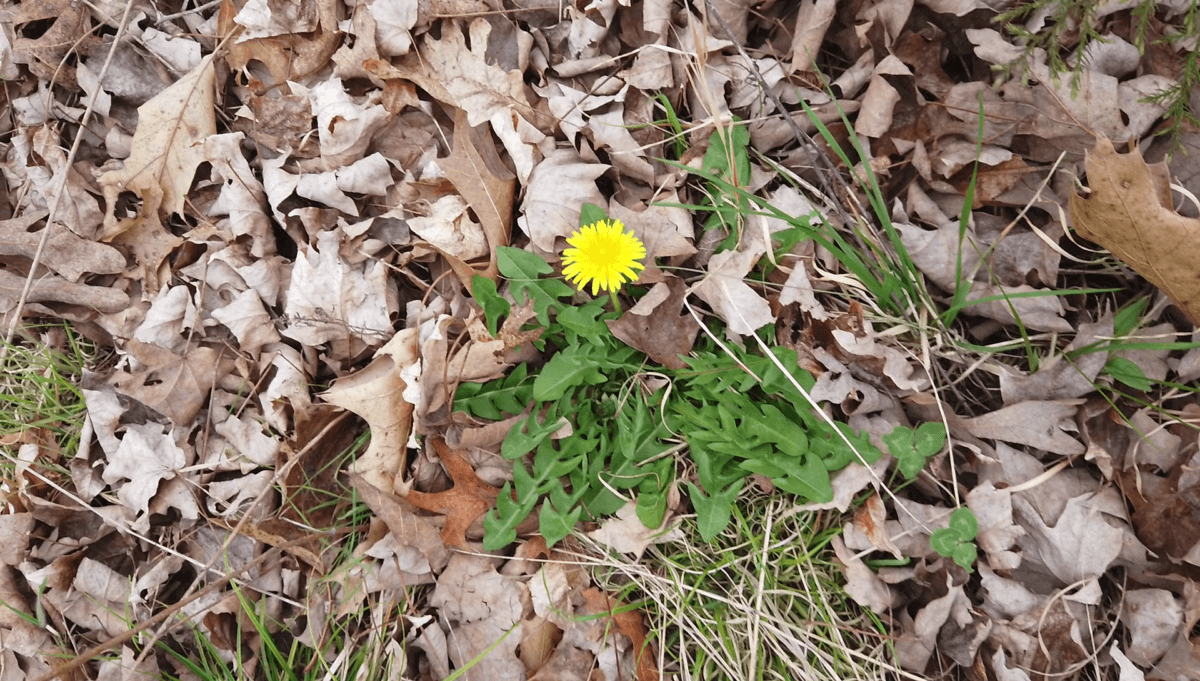
Dandelion blossoms are a sign of happiness and warmer weather coming, and a true marker that winter is over. I always smile at the first, brave bits of sunny yellow that somehow emerge while I’m still wearing wool socks and sweaters.
The blossoms have a bit of the dandelion leaf characteristic bitterness, but it is paired with a nectar sweetness that makes them a delight to eat. Kids love eating dandelions, too — both for the flavor and being able to eat something so ubiquitous. Or maybe because they like the horrified look on Grandma’s face when she sees her grandchildren chewing on the lawn. Folks have brewed dandelions into wine and soda for ages as well. Check out our earlier article on the subject here.
Just be sure that no creatures are enjoying the blossoms before you do. That cache of sweet nectar is a jackpot for bees and ants, and if you don’t give the blossoms a good shake and inspection before popping them in your mouth, you may accidentally eat more than you bargained for!
Redbud (Cercis canadensis)
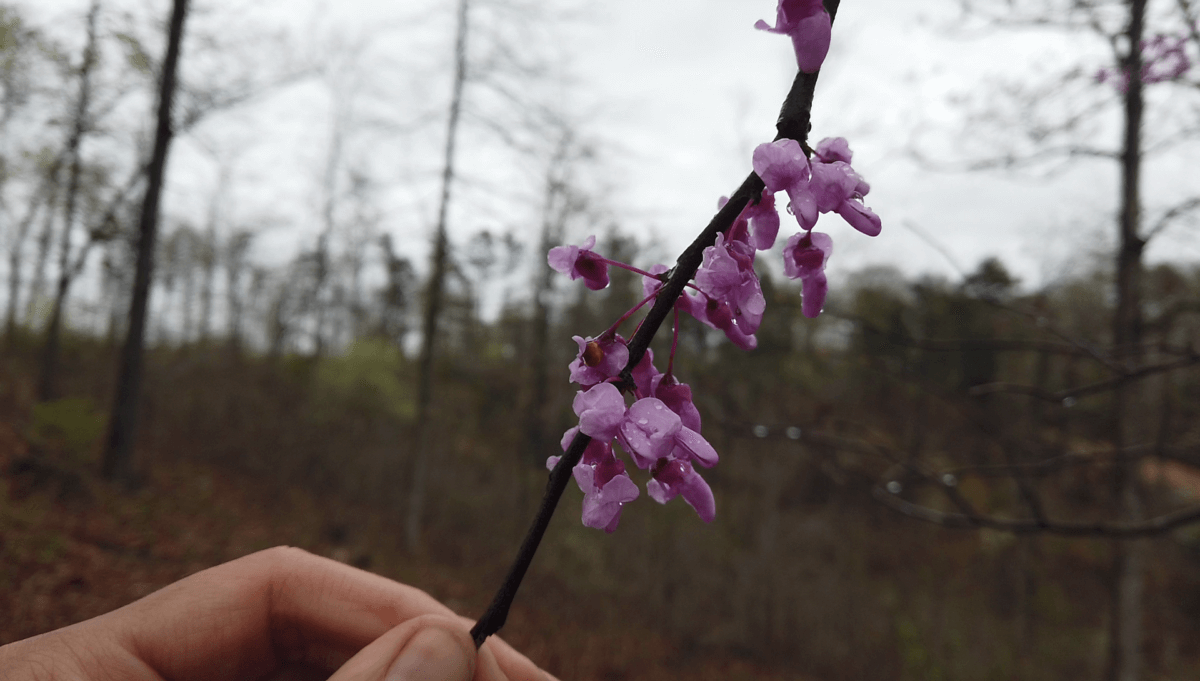
An ephemeral treat, redbud blossoms only appear for a brief time in early spring and well before any tree has leafed out. You’ll be able to find redbud at the margin of a forest in early April. It will be a lovely shade of pink that stands out from the barren-looking branches on the rest of the trees. Trees typically reach 20 to 30 feet in height, and have distinctive, alternate, heart-shaped leaves in the summer. Redbud has smooth, gray bark and is often a graceful, calligraphic shape.
Blossoms and unopened buds taste like sweet peas and have a pleasant texture. They’re excellent on their own, but can also become a delightful, edible garnish on a cheese tray with homemade crackers. As with all edible flowers, remember that the blossoms you eat won’t be able to sustain the spring butterflies or become an edible seed pod later, so I recommend browsing redbud branches lightly.
Violet (Viola spp.)
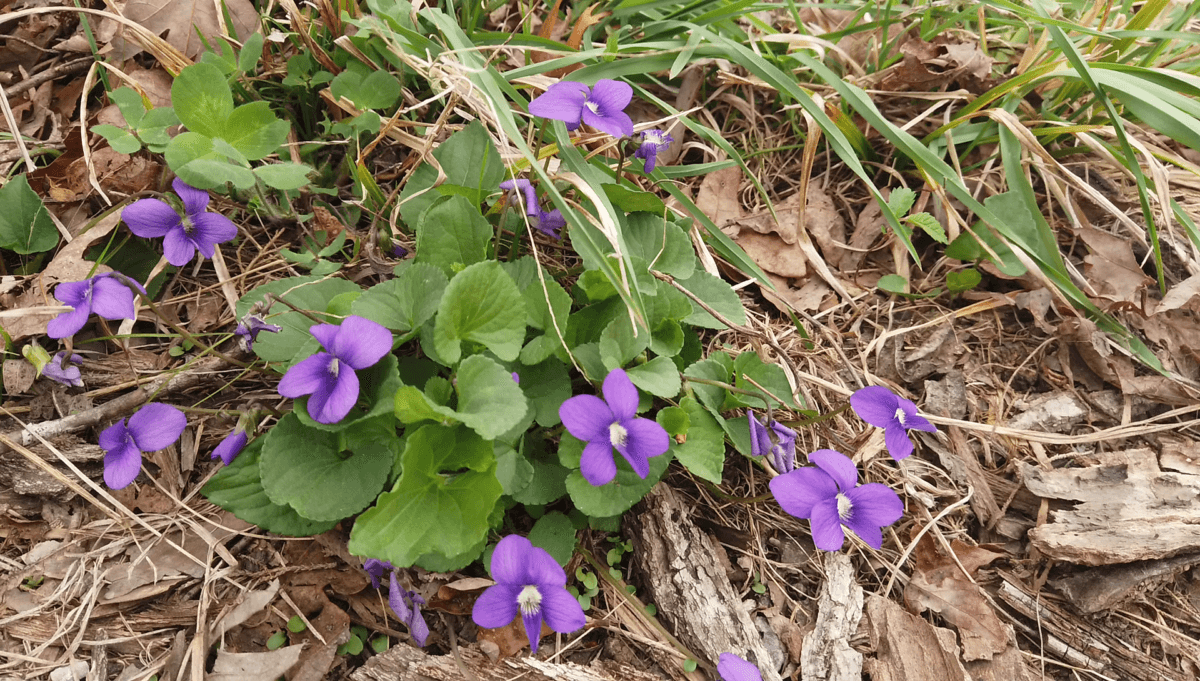
In early April and May, violets grace the unsprayed lawns and fields of the world. The leaves of every species vary a surprising amount, but their distinctive blossoms show the family ties. They are 5-petaled, but the petals are irregular, with two distinctly paired on the top, two to each side, outstretched, and one at the bottom that often has purple streaks.
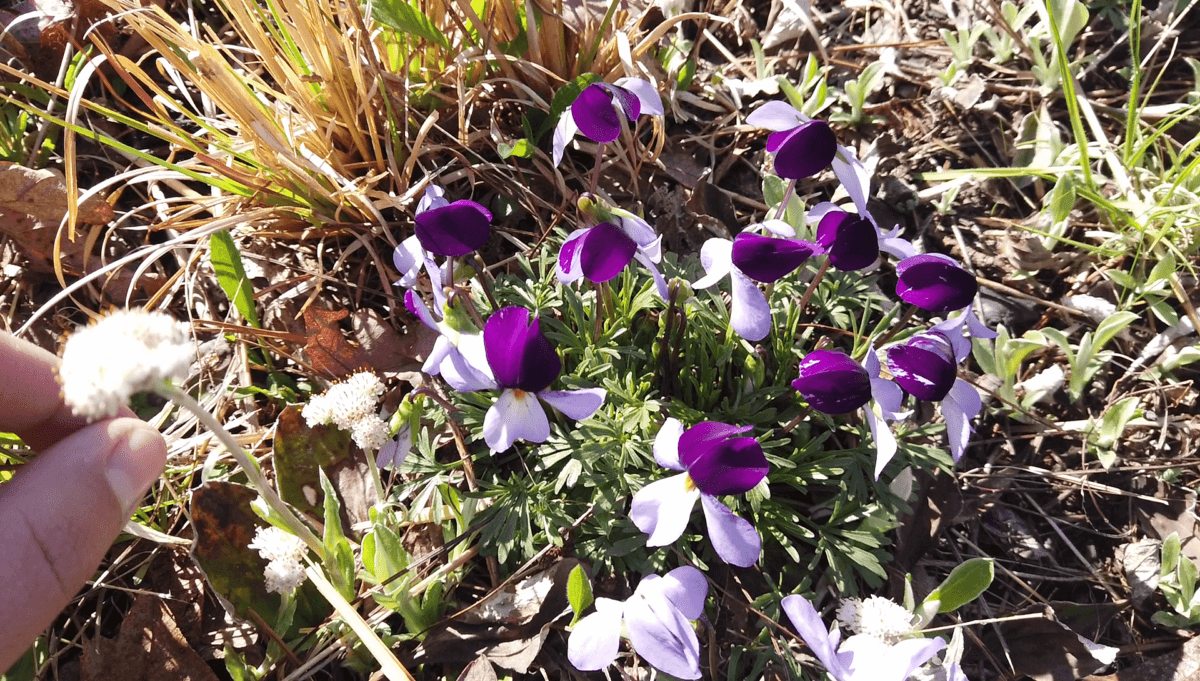
The violets I’ve shown here are common violet (Viola sororia, top) and birdfoot violet (Viola pedata, bottom). Common blue violet has abundant edible leaves (that we’ve cover at length in this article) as well as those beautiful blue flowers! If you really want a harvest of violet blossoms, however, birdfoot violet is the most generous. The profusion of lavender, white, and blue-streaked blooms can be absolutely carpet-like. I admit, I often can’t bring myself to gather them when they’re thick like that. I’d rather just take in the view and be thankful for a new spring.
The blossoms look pretty and taste rather bland, but I can’t resist. Perhaps it’s their crisp texture and the bitty burst of sweetness. Blossoms are a dazzling salad garnish, and both blossoms and leaves make a healthful and tasty tea that’s even nicer with a swirl of wildflower honey.
Red Clover and White Clover (Trifolium spp.)
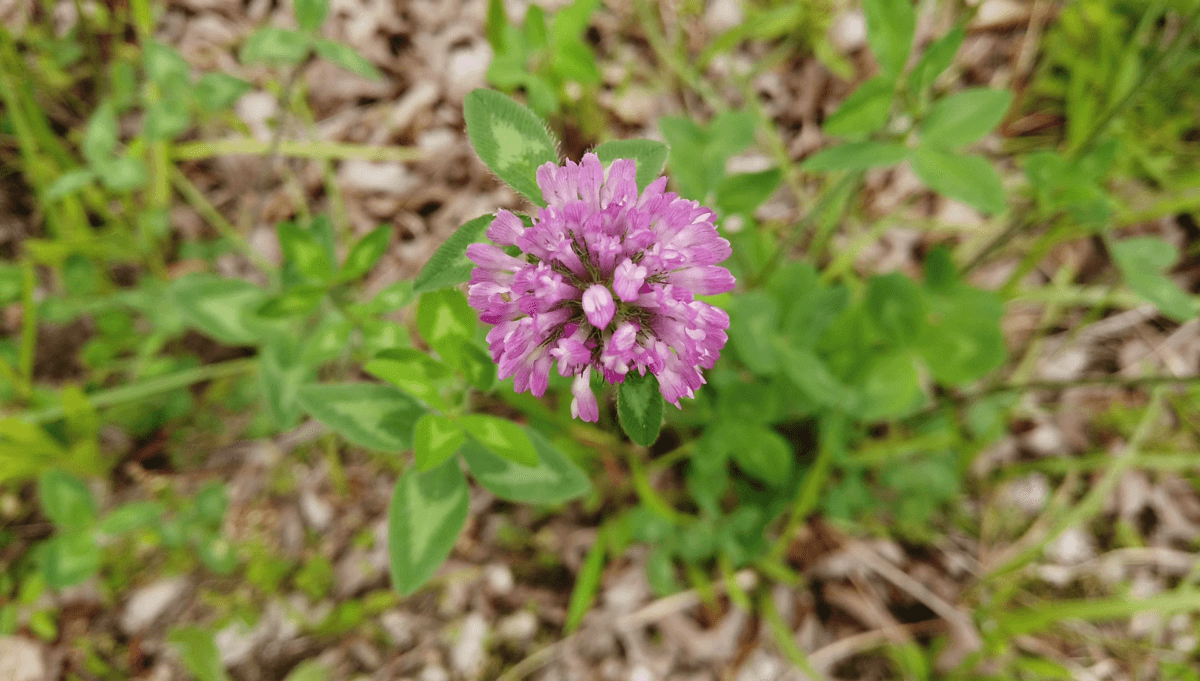
One of my earliest foraging memories from childhood is plucking the individual florets from a red clover blossom and dabbing the sweet nectar on my tongue. That same sweetness can be enjoyed by a forager of any age. While the blooms of both white clover (Trifolium repens) and red clover (Trifolium praetense) can be eaten raw in a salad, I suggest making them easier to eat by breaking the flower heads apart and scattering the pieces like a garnish. They’re a lovely inclusion in soups or mixed in a greens dish, but my favorite way to enjoy them is tea — especially the red clover blossoms.
Clovers are high in mineral content, which means they can take up heavy metals and pesticides from polluted soil. Be sure to forage for these abundant blooms in places you know aren’t contaminated.
Black Elderberry (Sambucus nigra)
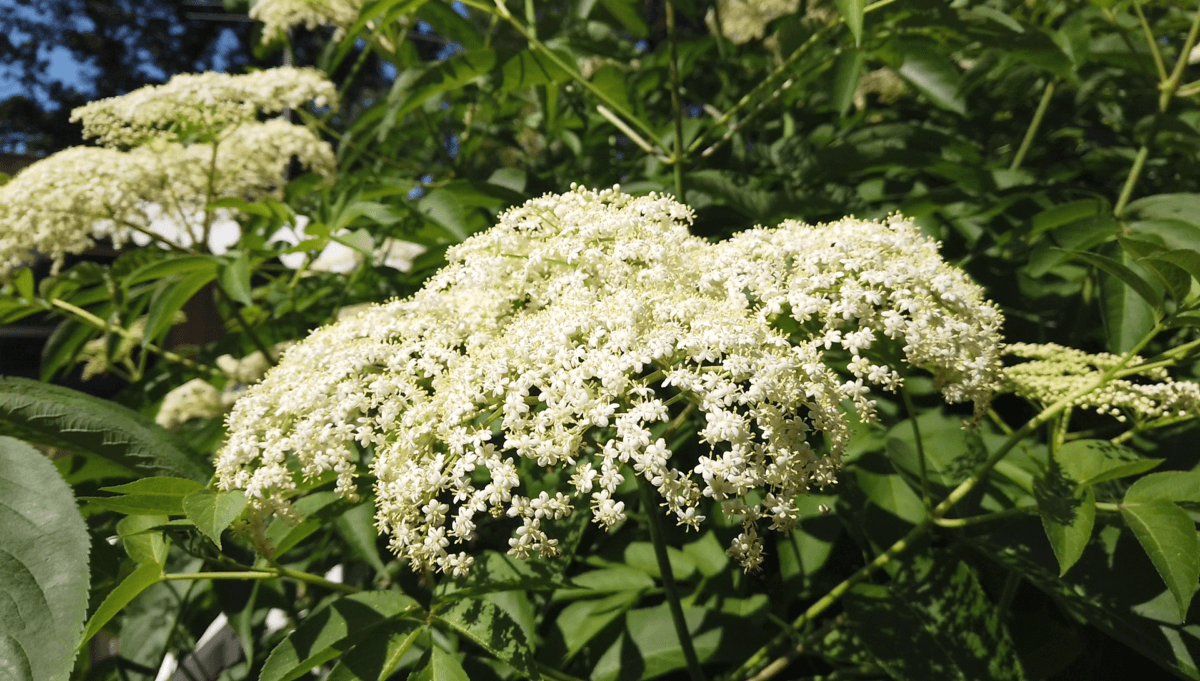
Blooming in snowy profusion as the summer heat rolls in, black elderberry is a plant that is always associated with the sound of cackling cicadas and sunburn. The 5-petaled flowers are clustered in impressively huge umbels that produce a strong, somewhat sweet, somewhat musky aroma. The flowers make a delicate, honey-scented tea that is irresistible with a few of the starry blossoms are scattered across the surface.
Again, remember when you remove the blossoms, you stop them from developing into berries. Wild creatures adore the berries, and they’re a wonderful food to forage later, so gather blossoms thoughtfully. Elderberries are common, so it should be easy enough to take just a few flower clusters from every plant you find, rather than clearing a single plant of all edible flowers. An alternative gathering method is to shake the blossoms from a loaded plant into a ready container. The bitty petals of already-fertilized flowers will rain down into a bowl (along with a few spiders and leaves), giving you plenty to brew while still allowing the plant to finish making berries.
Finally, don’t confuse black elderberry with red elderberry (Sambucus racemosa). Red elderberry blossoms emerge later in the season and form a flat flower head, rather than black elderberry’s domed poof. The fruit of red elderberry is often considered toxic, and I can’t find any good information on the edibility of the blossoms, so let’s skip that plant for now.
There are far more edible flowers than these, of course, but I haven’t tried them all yet:
- Basswood flowers
- Kudzu
- Daylily
- Black locust flowers
- Hibiscus
- Lilac
Use the list as a starting point. If you happen to know those plants and have access to them, research how to eat and when to use them. And share your edible flower stories in the comments below. Do you have any you look forward to nibbling? Or, do you have similar childhood memories connected with foraging flowers?










































Thank you for such an informative article! Violets are wonderful for making syrups to add to teas and other concoctions. I love collecting them on the trails near my home every year.